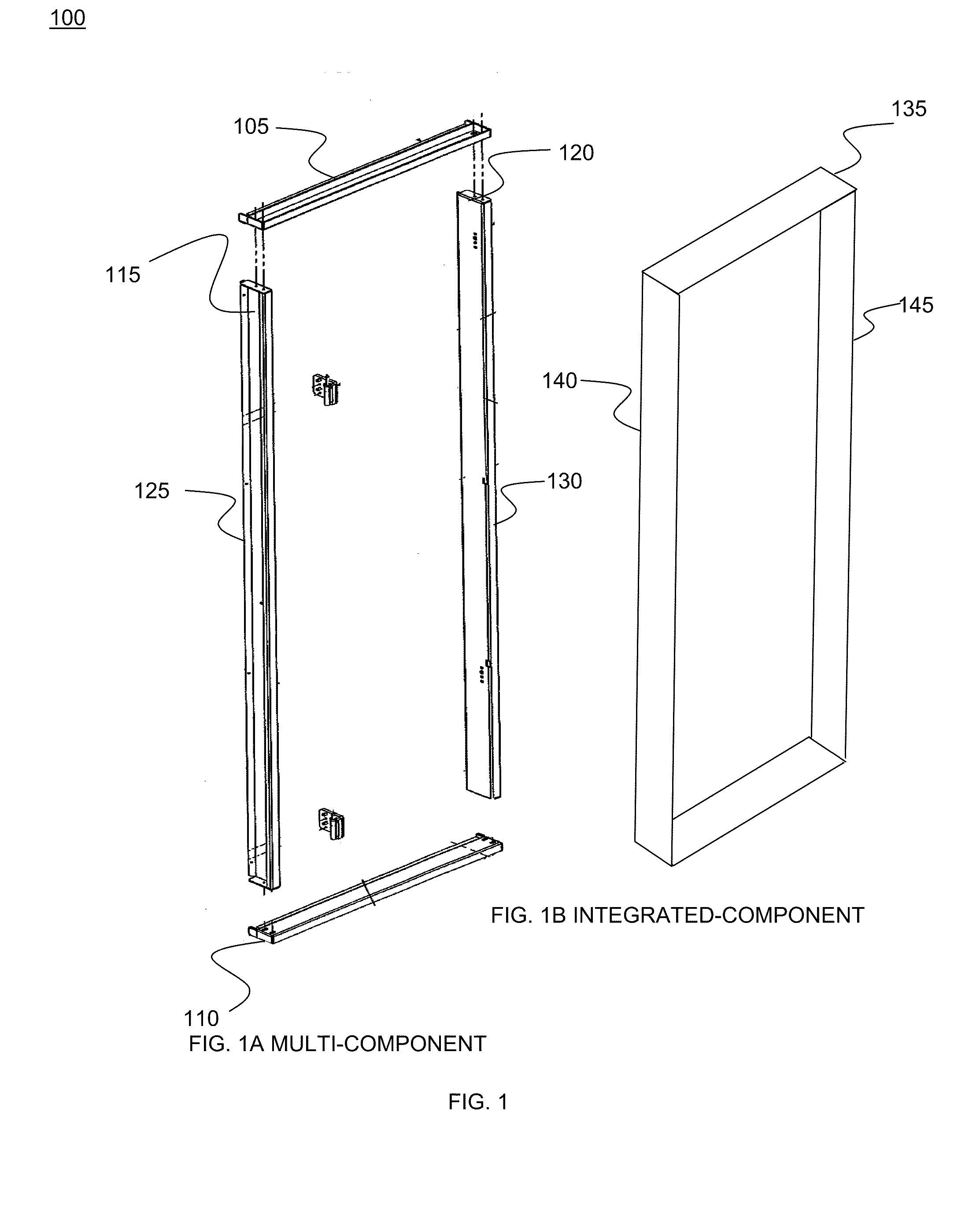Rear door heat exchanger transition frame
a heat exchanger and transition frame technology, applied in the direction of heat transfer modification, electrical equipment, lighting and heating apparatus, etc., can solve the problems of over-crowding of servers, over-crowding of cooling components, and exceeding the needs and budget of start-ups and cost-sensitive operations
- Summary
- Abstract
- Description
- Claims
- Application Information
AI Technical Summary
Benefits of technology
Problems solved by technology
Method used
Image
Examples
embodiment 300
[0040]FIG. 3 is a diagram of components comprising a first transition frame embodiment 300 depicting vertical side 305 and cross section A-A 310 of vertical side 305. Second view 315 of vertical side depicts view B-B of section 310. Perspective view of horizontal side 320 is also shown in orthogonal view C-C 325.
embodiment 400
[0041]FIG. 4 is a diagram of components comprising a second transition frame embodiment 400 depicting vertical side 405 and cross section A-A 410 of vertical side 405. Second view 415 of vertical side depicts view B-B of section 410. Perspective view of horizontal side 420 is also shown in orthogonal view C-C 425.
embodiment 500
[0042]FIG. 5 is a diagram of components comprising a third transition frame embodiment 500 depicting vertical side 505 and cross section A-A 510 of vertical side 505. Second view 515 of vertical side depicts view B-B of section 510. Perspective view of horizontal side 520 is also shown in orthogonal view C-C 525.
PUM
 Login to View More
Login to View More Abstract
Description
Claims
Application Information
 Login to View More
Login to View More - R&D
- Intellectual Property
- Life Sciences
- Materials
- Tech Scout
- Unparalleled Data Quality
- Higher Quality Content
- 60% Fewer Hallucinations
Browse by: Latest US Patents, China's latest patents, Technical Efficacy Thesaurus, Application Domain, Technology Topic, Popular Technical Reports.
© 2025 PatSnap. All rights reserved.Legal|Privacy policy|Modern Slavery Act Transparency Statement|Sitemap|About US| Contact US: help@patsnap.com



